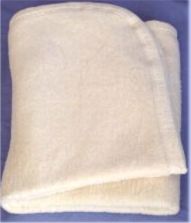Over the past decade, you may have heard some of the reports citing conventional cotton farming as one of agriculture's most environmentally destructive activities. The simple act of growing and harvesting the one pound of cotton fiber needed to make a T-shirt (or any other conventional cotton product for that matter) takes an enormous toll on the air, water, and soil, not to mention the health of people living in cotton growing areas.
Positive alternatives for the cotton industry and its related businesses are emerging, however. Over the past decade, a small number of farmers and manufacturers have pioneered the market for organically grown cotton, producing fibers and clothing while significantly reducing toxic chemicals. (Source: www.demi.org.uk)�

The
first serious step towards organic cotton growing and processing was taken
in Turkey in the early 1980s. Since then, the amount of organic cotton
produced has grown steadily � from 3,400 tonnes in 1992 to nearly 13,000
tonnes in 1995. The number of acres of organically grown cotton in
California, for instance, grew from 5,000 to 40,000 between 1998 and 2002.
This led to 12,500,000 fewer pounds of agrochemicals being used.
Without
the use of pesticides, crop yields fall when farmers first turn to organic
methods. For example, in the Kahramanaras region of Turkey, changing to
organic production resulted in a drop from 3,160 to 1,500 kilos per
hectare. But the yield gradually recovered, with production increasing to
2,750 kilos per hectare.
On average, organic cotton crop yields are about 14% lower than conventional cotton crops. However, income is about 6% higher because production costs are lower. Soil fertility, pest management and natural controls have all helped to reduce the presence of insects that can damage the cotton.� To find out more visit - www.sustainablecotton.org/